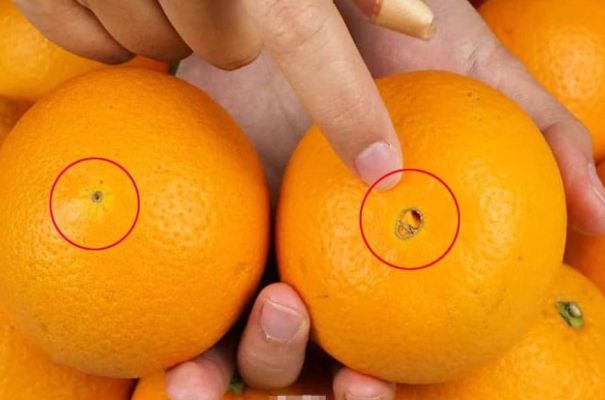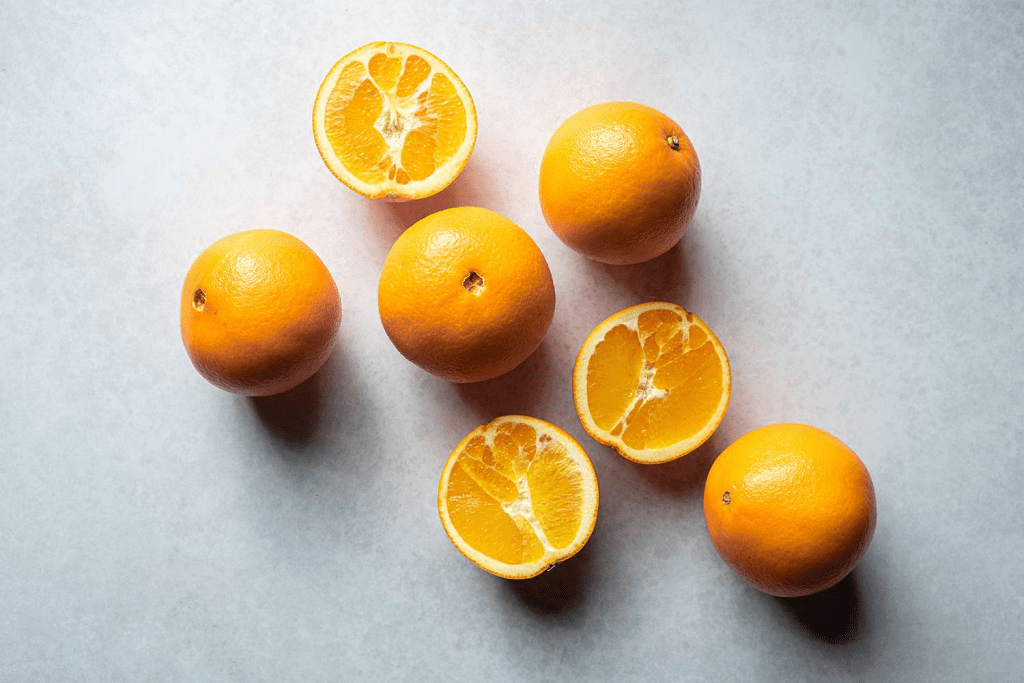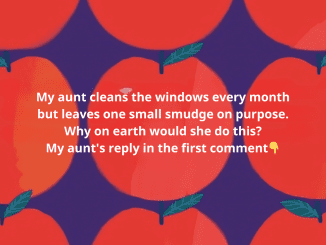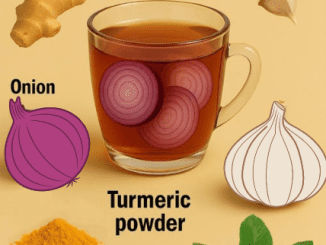Have you ever picked up an orange and wondered why some have a big navel while others only show a small dot? While it might seem like a minor detail, the size of the navel actually plays a big role in the quality, taste, and juiciness of the fruit.
The Key Differences Between Large Navel Oranges and Small Navel Oranges

When examining oranges, the navel provides an important clue about the fruit’s quality. Large navel oranges feature a prominent, round navel with a visible indentation in the center. While these may look attractive, they often disappoint once you cut into them. Large navel oranges tend to have a thick white membrane surrounding the navel, leaving fewer juicy segments inside. The flavor is typically bland, and the juice content is lower, making them less desirable for eating or juicing.
On the other hand, small navel oranges don’t have an obvious, protruding navel. These oranges usually have thinner peels and contain more sweet and juicy segments. If you’re looking for an orange that bursts with flavor and juiciness, small navel oranges are the clear winner.
So, the next time you’re shopping for oranges, take a moment to check the navel. A smaller navel means a more delicious fruit—and that’s what you want in your basket.
How to Choose the Perfect Oranges
Aside from checking the navel size, there are other tricks to ensure you’re picking the tastiest oranges. Here are some tips to help you select the best fruit:
1. Look at the Color
The color of an orange is your first visual cue. While bright golden-orange fruits are tempting, not all oranges are created equal. The darker the orange hue, the sweeter the fruit tends to be. This darker color indicates the orange has received plenty of sunlight, allowing it to develop higher sugar content. On the contrary, pale oranges often lack the rich sweetness you’re looking for.
Pro Tip: Avoid oranges with greenish patches or dull skins, as they may not be fully ripe or flavorful.
2. Check the Shape
When you browse an orange stall, you’ll notice a variety of shapes—oval, round, plump, and slightly wrinkled fruits. If you’re after a juicy, sweet orange, opt for the round ones. Round oranges usually have well-developed segments and a thinner peel, which translates to more juice and sweetness.
Pro Tip: Skip oranges with an overly rough or wrinkled skin texture, as these may indicate dryness or age.
3. Feel the Weight
Don’t rely solely on looks! The weight of an orange can tell you a lot about its juiciness. Hold an orange in your hand and feel its heft. A heavy orange means it’s packed with juice, while a lighter one is likely older or drier.
Pro Tip: Avoid large oranges that feel surprisingly light, as they may have a thick peel and dry, unappetizing segments inside.
4. Test the Firmness

The firmness of an orange is another indicator of its quality. Fresh, ripe oranges feel slightly soft but still have a bit of elasticity when you press them gently. If the orange feels too firm or difficult to pinch, it likely has a thick skin and dry segments. Conversely, overly soft oranges may be overripe or spoiled.
Pro Tip: Aim for that perfect balance—firm yet slightly springy.
Why Navel Size and Quality Matter
You might wonder why some oranges develop larger navels than others. The navel in an orange forms as a secondary fruit develops within the peel. While this doesn’t affect the fruit’s edibility, it does impact the proportion of peel, membrane, and segments. A large navel often means more membrane and less fruit, which is why oranges with smaller navels are typically sweeter and more satisfying to eat.
Final Thoughts: Don’t Settle for Sour Oranges
Oranges are a go-to fruit for their sweet flavor, juicy segments, and health benefits, but not all oranges are created equal. Paying attention to the navel size, color, shape, weight, and firmness of an orange can help you choose the tastiest fruit every time.
When in doubt, opt for small navel oranges—they’re your ticket to a burst of sweetness and juiciness in every bite. Remember, the next time you’re at the market, take a little extra time to inspect your oranges. Your taste buds (and your wallet) will thank you!


